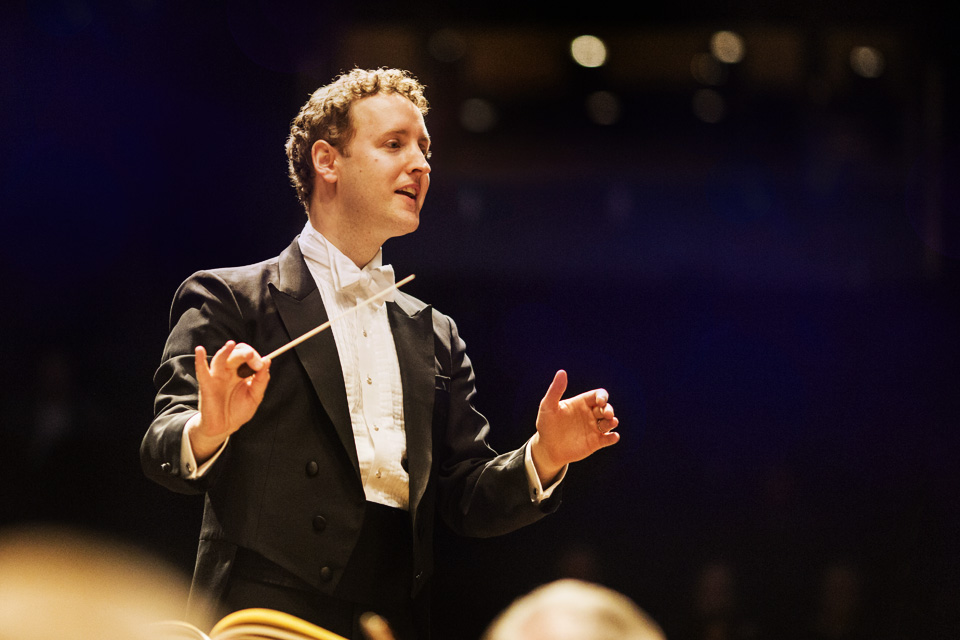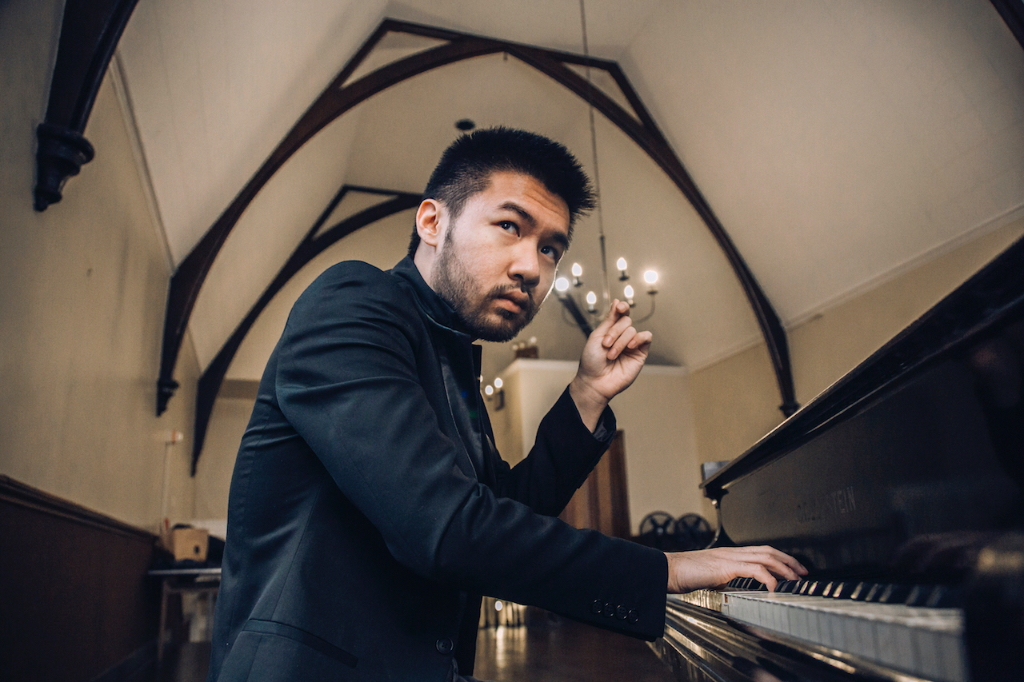Pianist Conrad Tao Dazzles Mainly Mozart Festival Orchestra Opening
The air could not have been more electric in the Balboa Theatre Saturday night (June 10) when the Mainly Mozart Festival Orchestra finished its scintillating account of Stravinsky’s “Pulcinella Suite” under the baton of Music Director Michael Francis and Conrad Tao launched into his exuberant keyboard fusillade that turned into Mozart’s Piano Concerto No. 8 in C Major, K. 246. It would be difficult to imagine a more auspicious beginning of the orchestra’s part of the Mainly Mozart Festival—which most consider the heart of the annual June music festival, now in its 29th season.
Francis found the ideal balance between maintaining the predictable, cleanly defined Baroque dance suite structure upon which Stravinsky built his 1920 ballet Pulcinella and emphasizing the titillating modernist riffs and unexpected metrical changes he added to jazz up the 18th Century. This ballet and the 1922 orchestral suite he extracted from it opened the neoclassical chapter in Stravinsky’s chameleon composing career, and it provided a template for a whole roster of postwar European composers: Paul Hindemith, Francis Poulenc, Darius Milhaud, Ottorino Respighi, and Béla Bartók, not to mention nearly all of the disciples of master teacher Nadia Boulanger.What mattered most on Saturday, of course, was the orchestra’s vibrant ensemble throughout and the unceasing barrage of gorgeous solos from every section. Francis and his splendid crew did not pump up the excitement in this piece, but rather allowed its many virtues to shine through their magnificently focused performance, one that dared the listener to daydream for even a moment, lest he miss the exquisite pleasure of Principal Oboe Nathan Hughes’ glowing, limpid melodies in the Serenata, or Principal Flute Christina Smith’s enchanting solos in the Gavotte, or Contrabass Principal Scott Pingel’s humorous antics in the Vivo, or Principal Trumpet Stuart Stephenson’s spectacular fireworks in the Menuetto.
While the stage crew moved the grand piano to the center of the Balboa stage in preparation for the Mozart Piano Concerto, from the edge of the stage, Francis and Tao gave the audience their insights about this Piano Concerto. The animated Tao exuded that “I can hardly wait to show you” attitude of a 12-year-old about to demonstrate to adoring aunts and uncles his latest magic trick. For the record, on the day of this concert, Tao was all of two days shy of his 23rd birthday.At the piano, Tao worked musical magic, finding in this early Mozart concerto a depth and structural sophistication—at least in the outer movements—that could easily be missed in its congenial cascades of scales and figuration. Some piano virtuosi use velocity and strongly defined articulation to flaunt their technical prowess, but I felt that Tao use his ample technical gifts to open up Mozart’s complex satisfactions that lurk beneath his glossy surface. The orchestra provided Tao equally spirited and polished complement throughout, and I particularly enjoyed the animated, wry dialogue between the soloist and orchestra in the final movement, the Rondeau di Menuetto.
For his encore, Tao played Elliott Carter’s 2007 “Caténaires,” a breathtaking etude of Lisztian ferocity and brilliance. Those of us who remember his prodigious performance of Dmitri Shostakovich’s First Piano Concerto with the San Diego Symphony in 2015 were not at all surprised by this impressive display, but it proved astounding nonetheless.
After intermission, Francis found rekindling the excitement of the program’s first half a challenge. Mozart’s Symphony No. 30 in D Major, K. 202, an ingratiating entertainment written for the Salzburg court, lacked the drama stirred up by Tao and the C Major Piano Concerto. Once I adjusted to the modest aims of the symphony, observing the strengths of the orchestra itself proved rewarding. For example, the velvet sonority of the second movement, scored for strings alone, allowed Francis to sculpt subtle dynamic contrasts worthy of a world class string quartet. And the thrilling, elegantly balanced crescendos of the bracing Presto could only emerge from an orchestra as skilled as this festival orchestra.
Beethoven’s infrequently programmed First Symphony gave the festival orchestra a chance to flaunt its muscle as well as its wit. The players infused passion into the classical structure of the opening movement and basked in the Andante cantabile’s relaxed triple meter elegance. A vigorous scherzo and the racing finale brought both the First Symphony and the concert to an exciting close.
But I left the Balboa Theatre savoring Stravinsky’s invention and Tao’s brilliance.
[themify_box style=”shadow” ]This program was presented by the Mainly Mozart Festival in the Balboa Theatre in downtown San Diego on Saturday, June 10, 2017. The festival continues through June 24, 2017, with the remaining orchestra concerts presented in the same venue.[/themify_box]




